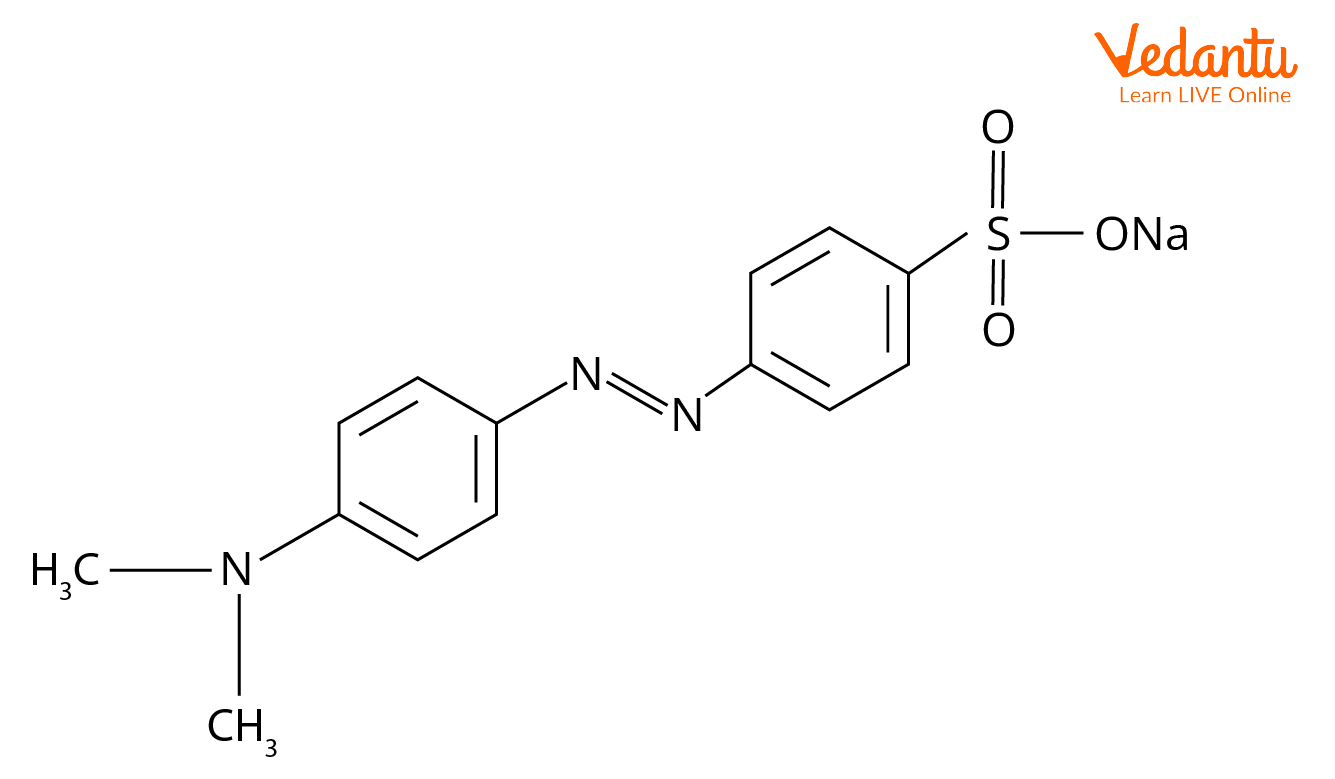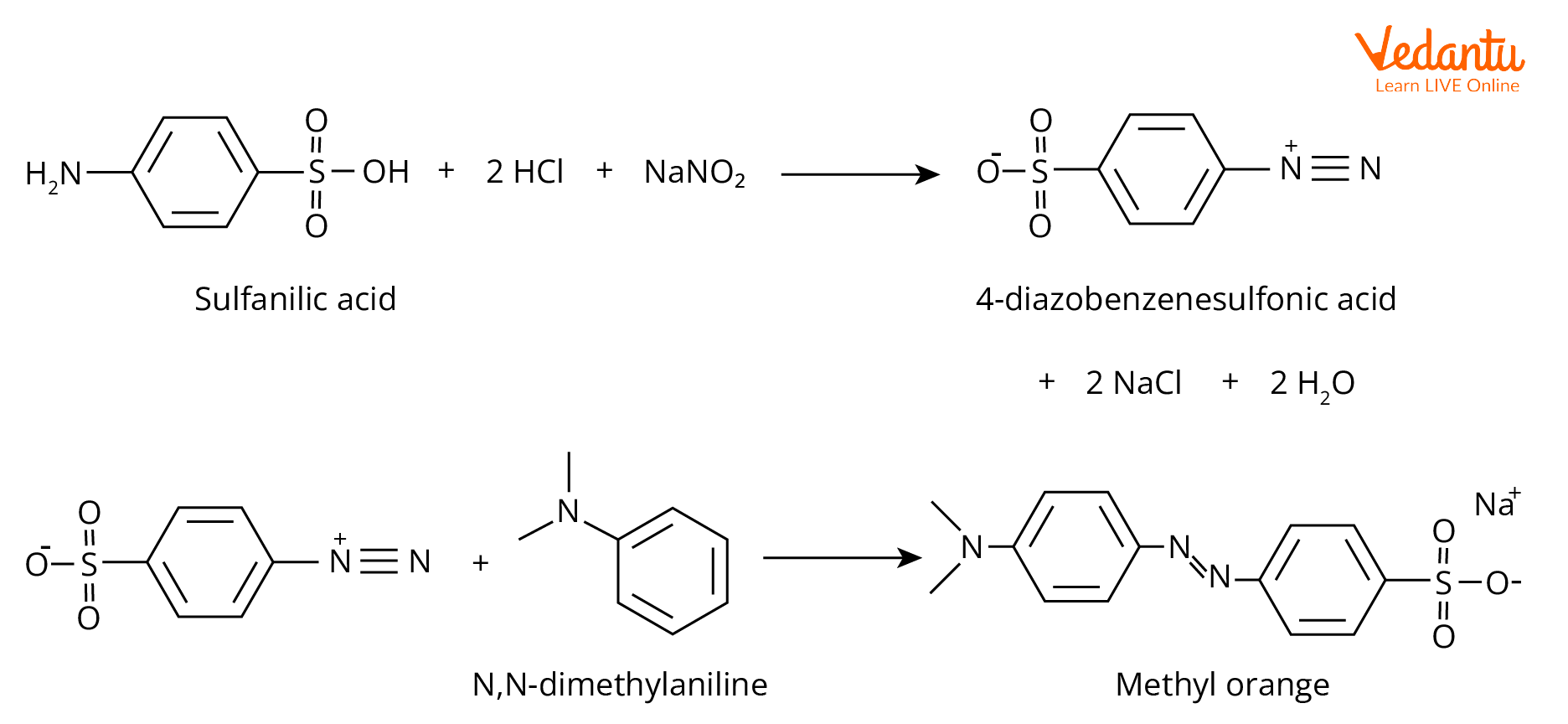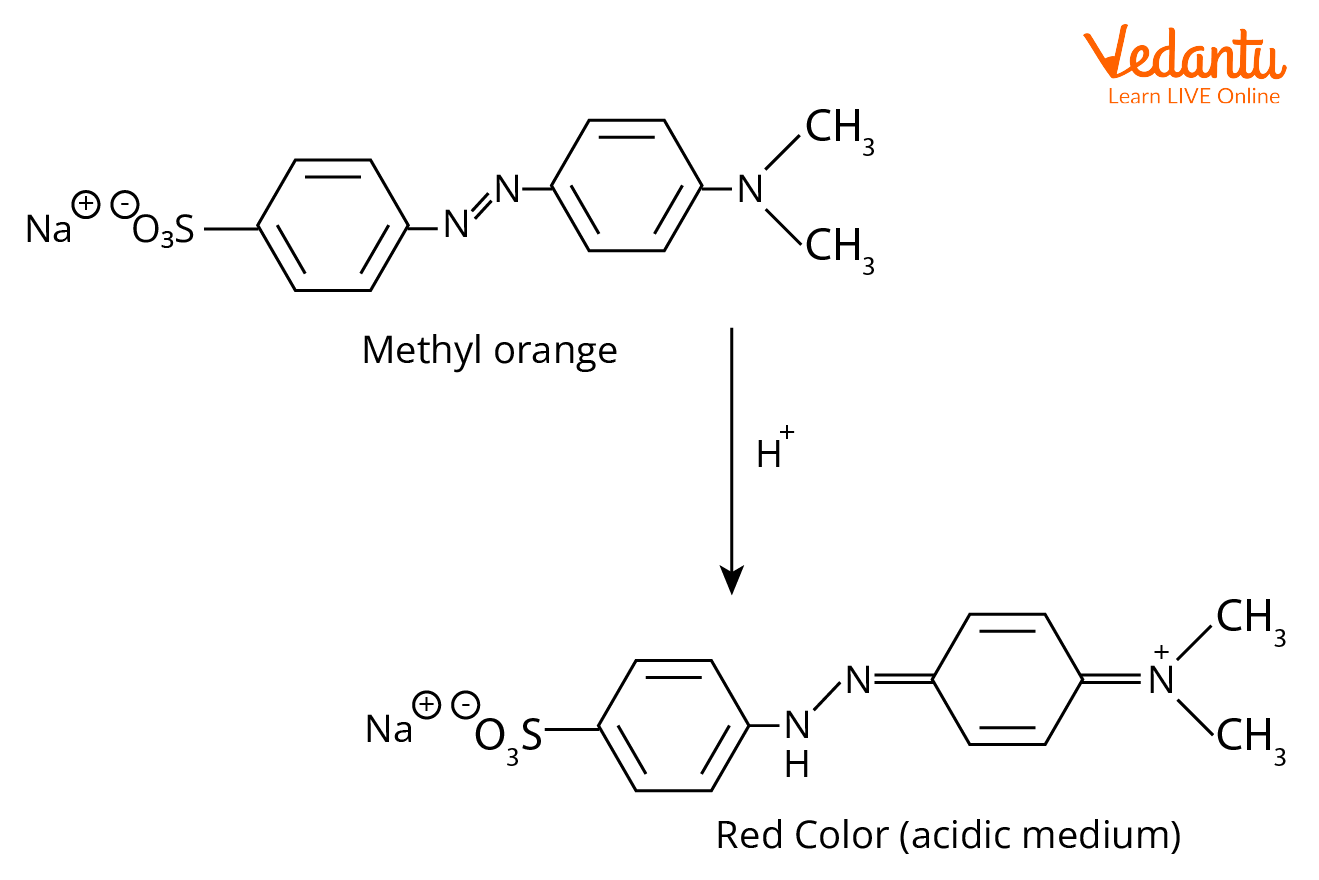




An Introduction to Methyl Orange
An indicator is used for the detection of endpoints in titrations. Methyl orange is one of the most popular indicators used for titration. Methyl orange is a weak base and is yellow in colour in the unionised form. When the medium turns acidic, it turns pinkish red in colour. It is a pH indicator used for titration in labs and industries because it gives clear and distinct colour variations at different pH levels.
What is Methyl Orange?
An azo dye is prepared from benzene, sulphanilic acid, and dimethylaniline. It is used in titration that gives different colours at different pH values. It is an indicator that tells whether a substance is acidic or basic. It is abbreviated as MeO. It gives a red colour with acids and yellow with the basic medium. Despite not having a full spectrum of colour change, it gives sharp end points.
When acidity decreases in a solution, methyl orange moves from red to orange and finally to yellow, the opposite occurs with the solution when acidity increases. The pH range of methyl orange is 3.1-4.4 and is mostly used for acidic solutions.
Structure of Methyl Orange
The structure of the methyl orange is shown below:

Methyl Orange Structure
General Properties of Methyl Orange
IUPAC Name - Sodium 4-{(4-(dimethylamino)phenyl)diazenyl)}benzene-1-sulphonate
Molecular Formula - C14H14N3NaO3S
Density - 1.28 g/cm3
Appearance - Orange or yellow solid
Molecular Weight - 327.33g/mol
Melting Point - 300°C approx.
General Preparation of Methyl Orange
A diazonium coupling reaction is used to prepare MeO. Firstly, sulphanilic acid and sodium nitrate react in presence of HCl. Then, the prepared diazotized sulfanilic acid is treated with N, N-dimethyl aniline to get the desired product that is methyl orange.

Preparation of Methyl Orange
Methyl Orange in Acid
It gets protonated at the central nitrogen atom from acid which gets reduced. It changes colour from orange to red.

Methyl Orange in Acid
Methyl Orange in Base
In the basic medium, the central nitrogen atoms again form double bonds and turn yellow from orange.
pH Range of Methyl Orange
At pH 4.3, a transition occurs in Methyl Orange.
It shows red colour – Acidic Medium, below pH 3.1.
Orange colour – weak Acid, above 4.4.
Yellow Colour – Basic medium, basic solution.
Difference between Phenolphthalein and Methyl Orange
Methyl orange in acidic conditions turns red whereas phenolphthalein remains colourless. In alkaline conditions, methyl orange turns yellow while phenolphthalein turns pink. Phenolphthalein has a pH range of 8.2-10.0, whereas methyl orange has a range of 3.1-4.4. The pKa of phenolphthalein is 9.4, whereas the pKa of methyl orange is 3.5.
Applications of Methyl Orange
It is used as an indicator for titration.
It gives colour variance at a different range of pH.
It is a water-soluble azo dye.
Conclusion
There are many natural as well as synthetic acid-base indicators found around us. Natural indicators are the indicators that are found naturally and can help in determining the acidity or basicity of a substance. They can be found even at home like turmeric, red cabbage, china rose, onion, etc. Methyl orange and phenolphthalein are synthetic indicators. Synthetic indicators are prepared in the laboratory.
These indicators are used for titration purposes and to test the pH of different compounds. They are used in industries as well as in laboratories. Methyl orange is a water-soluble azo dye with the molecular formula C14H14N3NaO3S which is used for titration for testing pH values. It gives red colour in acidic medium and yellow in alkaline solution. It has a pH range of 3.1-4.4. Being useful in titration, it has some harmful effects also.
FAQs on Methyl Orange - A pH Indicator
1. What is an azo dye?
Azo dyes are synthetic dyes having nitrogen as the azo group. These dyes are organic compounds having a functional group -N=N-. Due to π-delocalisation, aryl azo compounds give different colours, usually red, orange, and yellow. Methyl orange as an azo compound is used as an acid-base indicator.
They are used in the fibre, textile, paint, and cosmetic industries. They enter the human body through food and clothing which can trigger toxic effects on our health.
2. What are the other types of indicators?
Indicators are substances that change colour when added to the acidic or basic medium. They are of two types - natural and synthetic. They show different colours in the acidic medium and basic medium.
- Natural Indicators - litmus, red cabbage, onion, china rose, and turmeric are some natural indicators that can be found around us.
- Synthetic Indicators - those substances which are prepared in the laboratory that can help in identifying whether a substance is acidic or basic are synthetic indicators. Examples - are methyl orange, phenolphthalein, etc.
3. Is methyl orange toxic?
Methyl orange, if swallowed accidentally, can cause gastrointestinal problems like diarrhoea and vomiting. It may also cause skin and eye irritation. Inhalation may cause irritation in the respiratory tract. It is a flammable liquid and vapour.
Precautions could be washing hands thoroughly after the use of methyl orange. Keep away from the source of heat. Avoid contact with skin, eyes, and clothing. For safety purposes, always use droppers while adding methyl orange to your titration flask.












